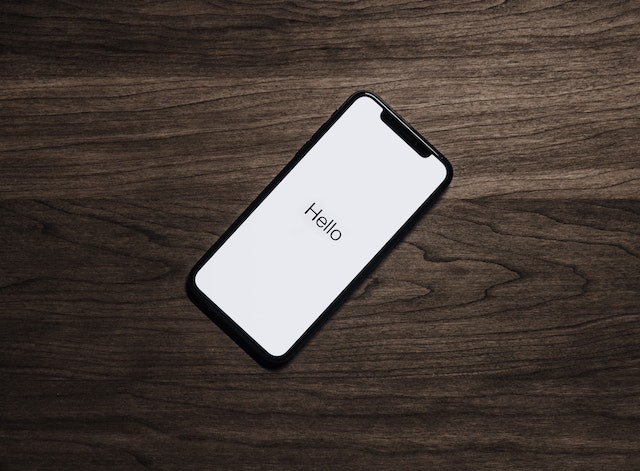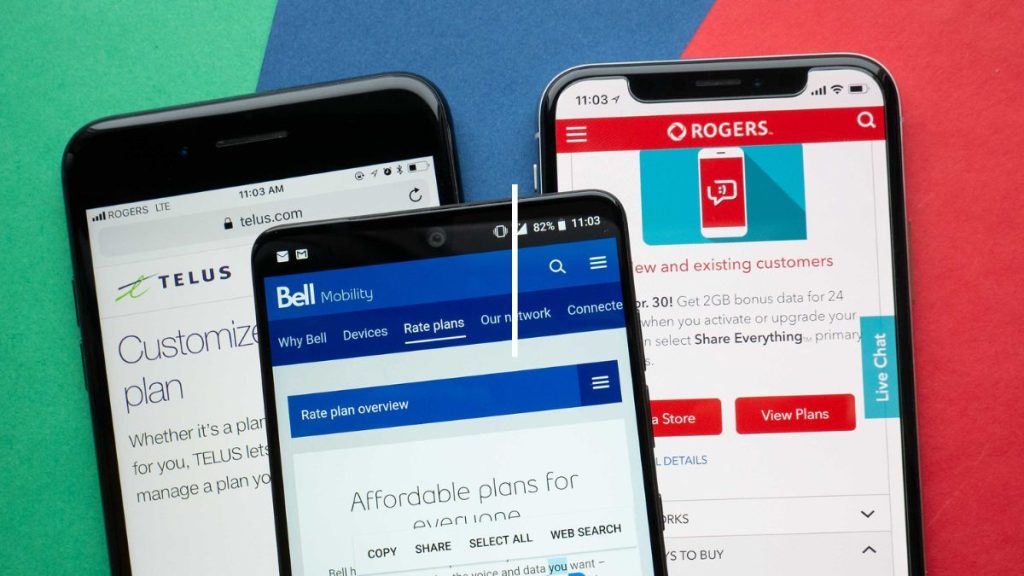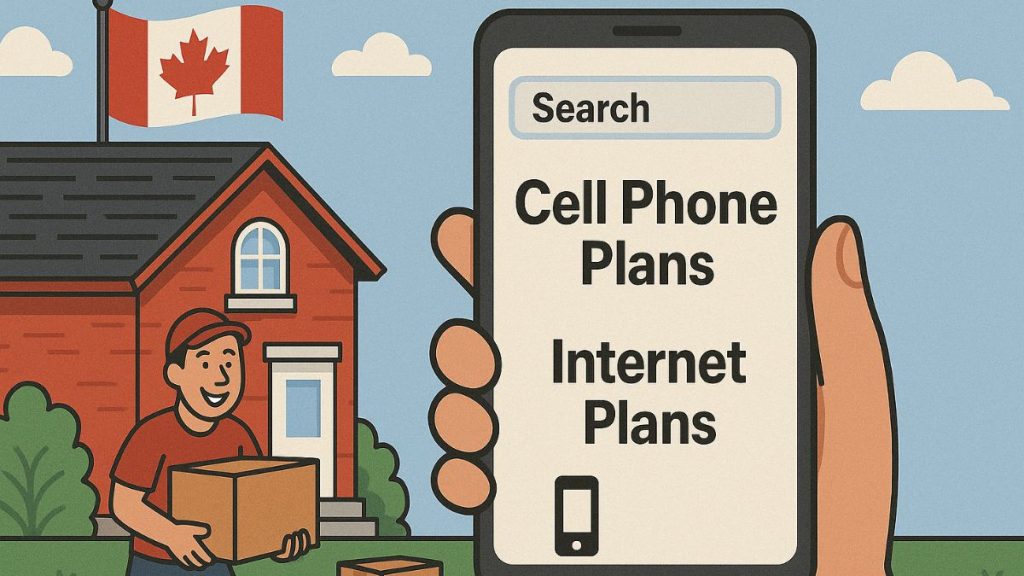Moving telecoms could come with some nasty surprises. In Canada, there is no agreement between the CRTC and the various providers and operators, nor is there any legislation governing contract cancellations in the event of a move. In fact, the CRTC advised us to check with our operator and told us that the situation varied from one operator and provider to another. So what’s the situation? What are the fees to be paid for your moving day, and can any of them be cancelled? PlanHub will answer all your questions.
What are the risks?
Getting your telecoms right has become of paramount importance. With the development of teleworking, the need to be connected as soon as you move in is becoming increasingly important.
Be sure to check whether your operator provides cellular subscriptions in the new place you’re moving to. Operators have agreements with each other so that their customers can receive service anywhere in Canada. However, these agreements cost money, and if you’re moving to a province or region where your operator doesn’t offer a package, they may have to restrict your data or even cut off your calls.
Are you staying with your telecom provider?
If you decide to keep your cell phone and Internet subscriptions with your current provider, you’ll pay very little.
Cellular plan: The good news is that you won’t have to pay anything if you keep your current cellular plan. Your operator will not have to create a new line. On the other hand, if you need to change operator, you may have to pay a fee, as we’ll see below.
Internet package: If you keep your current provider, you may have to pay installation fees, unless your future home is already connected and you’re installing your router manually. If you’re changing providers, we’ll detail everything you need to know.
Cellphone agreement
If you have taken out a contract with a cell phone, you will have to pay back the outstanding amount for your phone. Operators cannot recover the phone they sold you unless you took out your contract less than 30 days before you moved. The phone may be covered in cases such as a return allowed under Canadian consumer protection laws.
As far as fees are concerned, operators generally agree to terminate your cell phone plan, but others may require a fee of between $50 and $100 to terminate your contract.
Two-year agreement without a cellphone
If you have signed up for a two-year contract without renewing your phone. In this case, you can terminate your contract without penalty for moving. However, some operators may charge variable fees ranging from $50 to $100, depending on the length of the remaining commitment.
Service without a contract
If you are not subject to an agreement, you can cancel your services free of charge. In this case, you will generally have to pay for the current month, while your services will be suspended at the time of your next billing.
Internet
The case of the Internet is rather different. The equipment supplied to you may be leased or sold to customers. On the other hand, some providers may charge termination fees, while others are more flexible. Before you change providers, make sure that your future connection will be stable. To this end, PlanHub provides an Internet Score which will tell you the quality of each provider’s connection simply by entering your future zip code.
If the Internet terminal is sold to customers who sign up for a two-year commitment, they will be required to pay the terminal fee. If the equipment is rented, you will naturally be required to return it or pay for it in full.
If your router has been sold to you and you have extended your Internet subscription beyond the term of your agreement, you can terminate your services at no charge.
Compare internet packages and choose the one that suits you best
What to do if you’re not plugged in on time?
When you move, it’s best to give your supplier at least one month’s notice, but three months is best to ensure that you’re connected on July 1st. Don’t forget to check whether your current supplier operates in your new area and what competing offers are available. Find all the information you need here.
If you don’t have Internet access, there are a few solutions
Set your phone to data sharing mode: You can still work from home by setting your phone to data sharing. This way, you’ll still have access to the Internet. If you have an unlimited data plan of, say, 25GB, you’ll experience a slowdown after you’ve exceeded your 25GB allotment in 5G, but you’ll still be able to enjoy the Internet.
Go to a café with free Wi-Fi: Wi-Fi cafés are very practical, as they allow you to work in peace and quiet, as long as you consume. It’s a practical alternative, but in this case, we recommend using a VPN. As long as you’re on a Wi-Fi network, other users can intercept transmitted data, so it’s best to encrypt it end-to-end.
Collaborative spaces: There are a growing number of collaborative spaces in cities, and some, like Îlots d’été Air Commune, are even free during the summer. Here again, it’s best to use a VPN to keep your data confidential.
Can you convert an Internet terminal?
If you need to buy your supplier’s Internet terminal, you can sell it on the second-hand market. Prices vary but expect to pay between $140 and $150 for a Helix kiosk in good condition, for example.
Alternatively, you can convert your terminal into a router by activating the bridge mode, which allows you to create a bridge with any existing modem. To do this, connect only your router’s Ethernet port to the terminal, which will then be recognized as the entry point. Type your router’s address in your browser’s address bar (Chez Vidéotron 10.0.0.1), then go to the main menu detailing all your terminal’s features and activate Bridge Mode.
How to unlock your phone?
Several operators continue to sell locked phones on their networks. This could be a problem since you’re changing operators, so you won’t be able to use your phone. Fortunately, it is possible to unlock them, but this will require that you are in good standing with your operator, understand that you have paid all your bills and have no outstanding accounts.
First, you’ll need your IMEI number. To do this, dial *#06# on your keypad and note the IMEI number that appears. Then contact your operator’s billing department, who will perform the operation remotely or send you an unlock code to enter into your phone when inserting a Sim card from a different operator.
Find the cell phone plan for your unlocked phone:
Conclusion
Unfortunately, moving doesn’t come without a cost. If you are subject to an agreement, unless you retain your services, you may have to pay additional fees. Don’t forget to return loaned equipment promptly. Companies usually give you between 15 days and 1 month to do this. On the other hand, even if they send you a return label, many don’t set up an alert to let you know if the package has been scanned by a carrier. Your equipment may then be put aside for more than a week, waiting to be inspected, which further increases the chances of being charged by mistake and having to contact customer service for a refund.










